As Ryan mentioned in his excellent summary of recent Criterion-related blogging activity, I’ve spent considerable time over the past couple months watching and learning about the films of Mikio Naruse. Last week, on my Criterion Reflections blog, I summarized those impressions in my review of Naruse’s 1960 masterpiece When a Woman Ascends the Stairs. One thing I didn’t mention there that I discovered though was that Naruse’s films, aimed primarily at a female audience, were typically shown as the first feature on a double-bill, paired with another film intended to be mainly of interest to men in the interest of maximizing attendance at the theater. Though I doubt that Naruse films were ever shown in conjunction with any of the titles included in Eclipse Series 17: Nikkatsu Noir (different studios, mainly), I got my own version of that melodrama/action flick combo when 1960’s Take Aim At The Police Van turned up next in my long chronology of Criterion/Eclipse films. (I have it available to share as a Google Docs spreadsheet if anyone’s interested in checking it out, just let me know.)
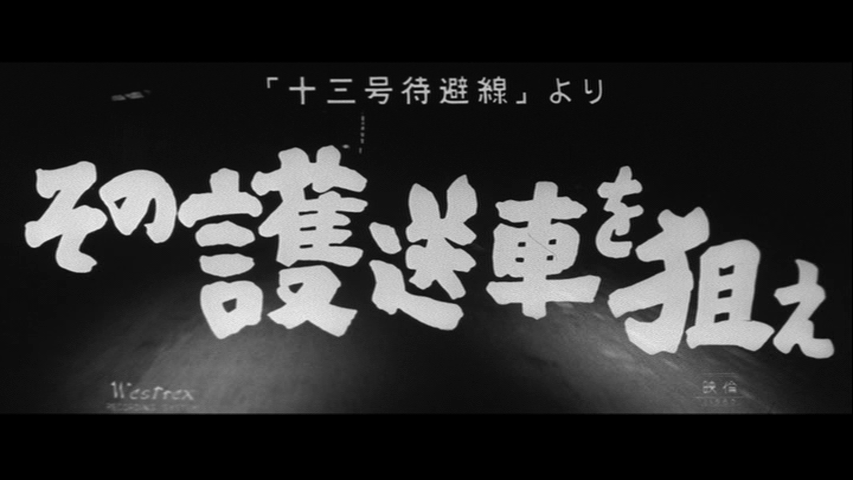
With a title just as audacious as it is unwieldy, Take Aim At The Police Van amply delivers on its implied promise of testosterone-fueled entertainment that keeps the kicks coming at a steady pace without challenging either the patience or the intellect of the viewers it has in its sights.
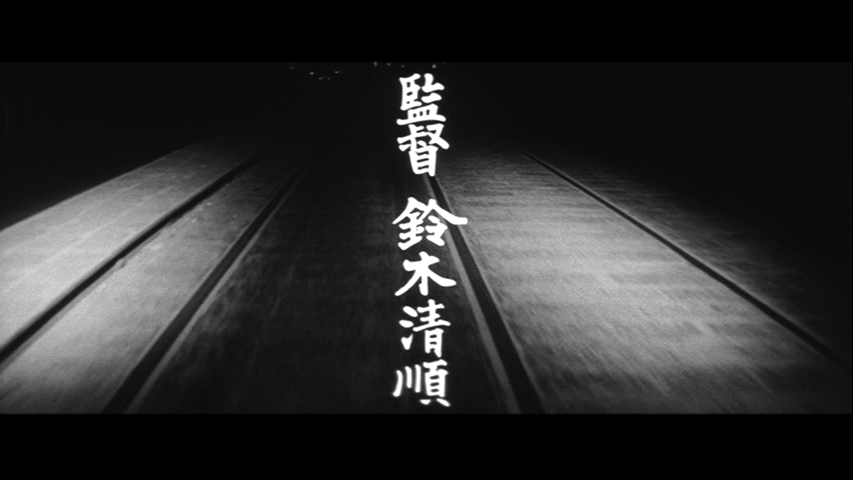
Beyond being simply another crackling-cool entry into this highly entertaining collection of late 50s/early 60s Japanese takes on the film noir genre, Take Aim At The Police Van is also important as the earliest film of Seijun Suzuki to earn the Criterion imprimatur. Though he’d been cranking out films at a proficient clip for several years, this one signaled a new turn for him as he began incorporating some of the wilder stylistic elements that secured him a strong reputation for outrageous visuals and mind-bending plot twists, as well as a spot amongst Criterion’s earliest DVD releases way back in 1999 when Branded to Kill and Tokyo Drifter were granted spine numbers 38 and 39 respectively. (And yes, @Criterion, proper anamorphic blu-grades oft those two films are on our 2012 wish list, unless you have a December surprise waiting for us instead!)
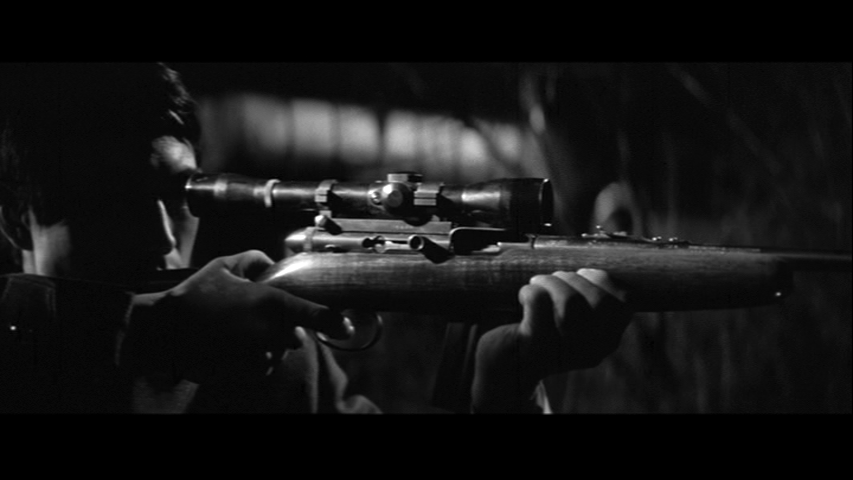
Indeed, this isn’t the kind of film that lends itself all that well to my style of film criticism, where I tend to gravitate toward the deeper underlying message of the movie and its implications for how we live and seek to influence the society we inhabit. Take Aim At The Police Van is, for the most part, a straightforward 80-minute exercise in devil-may-care escapism, a two-fisted macho fantasy that may be better chomped down in big bites rather than meticulously savored and contemplated. Even finding the right screen caps proved to be a bit of a challenge for me, especially since just about all the best bits are packed into this highly amusing trailer:
The main quibble I have with the above clip is that I don’t think they chose the best music to provide the accompaniment. There are much better selections they could have included than the blaring horns they used, such as the taut, dramatic tension-builder that opens the flick, or the seductive (but brief) nightclub riff that accompanies the strip club scene. But I guess that’s just an added incentive to watch Take Aim At The Police Van itself, rather than just settling for its trailer!
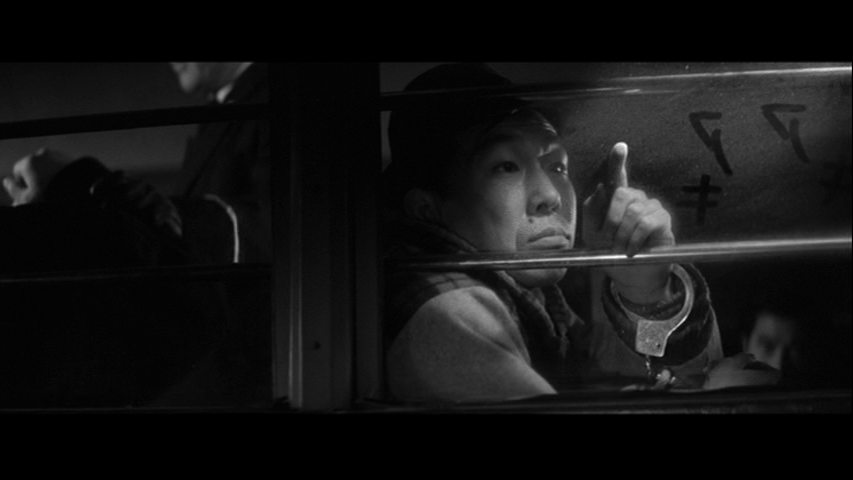
But in the interest of stoking your curiosity about this film, here’s a quick intro the story. It involves a petty criminal named Goro (pictured above) who narrowly escapes an assassination attempt as the film opens when a cold-blooded sniper , yes, takes aim at the police van traveling late one night to transport a small group of prisoners. The guard assigned to oversee the transfer, Tamon, is promptly suspended for his negligence, though I have a hard time understanding how he could have been held responsible for an elaborate ambush in the middle of the night. But his extended time off work provides the pretext for Tamon to set out in pursuit of the killers without the inconvenience of having to report to his day job.
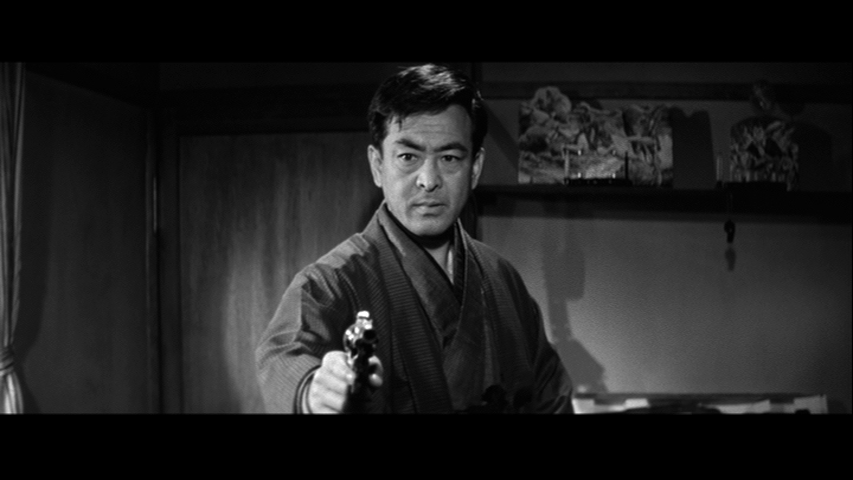
Truth be told, if Take Aim At The Police Van has a serious vulnerability even for its modest aims, it’s found in the ho-hum central character of Tamon, who’s a bit ragged and over-the-hill for this kind of role and doesn’t lend all that much to the excitement. In fact, it wasn’t until I had already collected the screencaps for this review and loaded them into the page that I realized I hadn’t even gotten one of the film’s main character! But I correct that, and there he is. And that gun he’s holding is a toy, just to let you know.
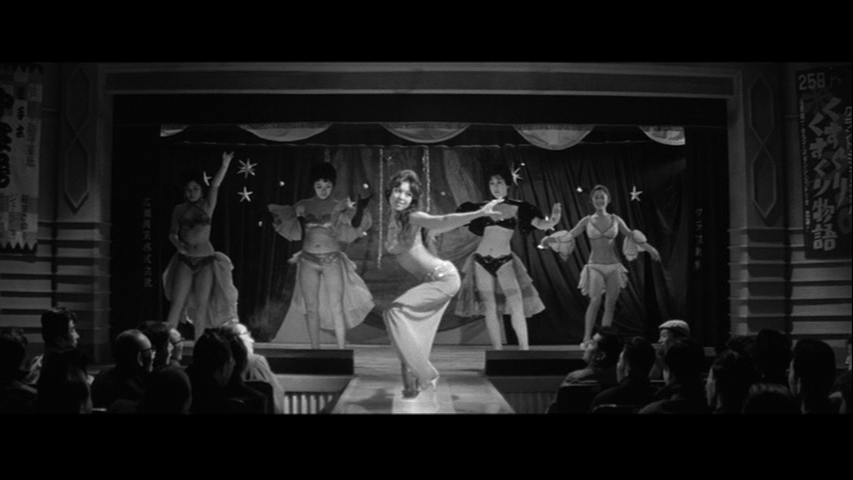
So, setting aside the mediocrity of Michitaro Mizushima as a leading man for now, let’s get on to Take Aim At The Police Van‘s more delectable attributes. As Tamon sets out to discover for himself why a gunman would open fire on a bus full of small-time crooks, he ventures into a sleazy underworld of stripper bars and girls for hire, under the guise of a “modeling agency.” In this regard, the film actually did provide an interesting counterpoint to the Naruse films which also had a frequently occurring theme of men who exploit women for financial gain.
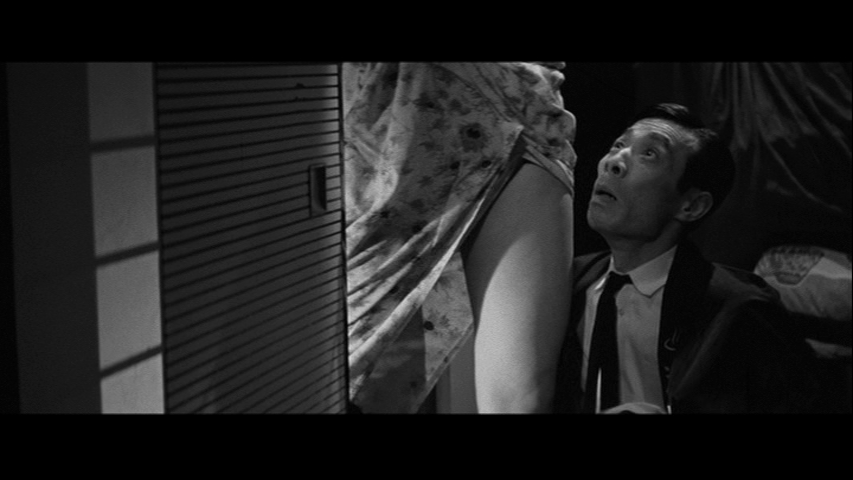
As an Everyman character who’s no uptight prude but still retains a sense of virtue, Tamon is appropriately disgusted at what he finds as he enters this subterranean realm of sex trafficking, and it lends his cause the veneer of righteous indignation as he sets out to bust up a despicable enterprise.

Still, one can’t resist the thought that Suzuki is trying to play it both ways here, sounding a note of moral outrage while using the slinky sex appeal of gyrating and leg-baring women to catch and hold our attention. Not to mention that woman writhing in agony/ecstasy as she massages the boob that’s just been fatally pierced by a poison arrow.
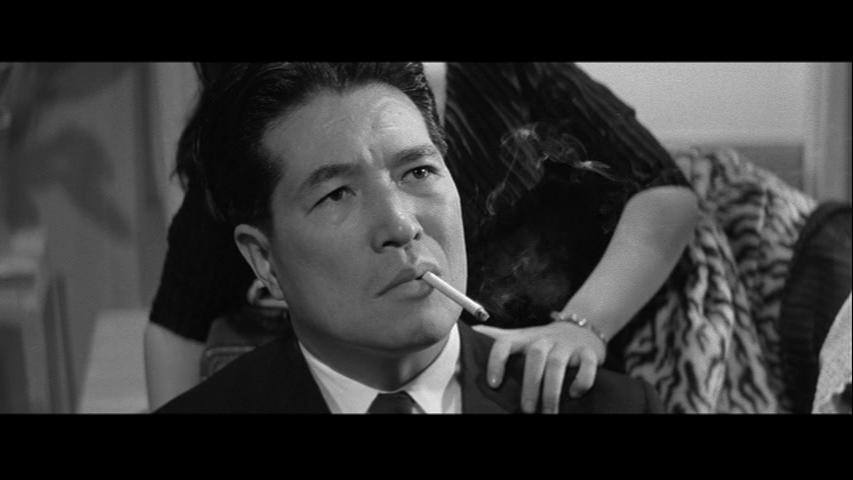
As for the men in the movie, they are invariably of the wizened, hard-boiled caste, smacking each other around, cussing one another out, backing up their bluster with brute force whenever necessary, which in this kind of film is, of course, very frequently.

And in keeping with the finest film noir tradition, there needs to be an alluring, enigmatic femme fatale, and we have a good one here in Yuko, the woman who manages that talent agency that puts the flesh of younger, more vulnerable women into that illicit market.
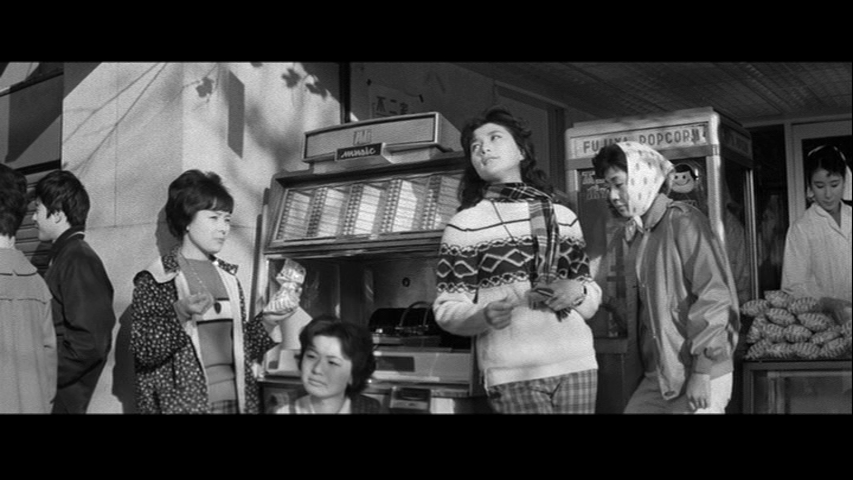
One of the girls who gets caught up in this snare of fast and easy money is Shoko, a pretty teenager in a sweater who’s got a thing for American rock & roll. Tamon’s pursuit of her through the streets of a Japanese harbor city to a “Shake Rattle and Roll” style soundtrack is one of the film’s highlights, and a harbinger of things to come as Suzuki moved further in his own exploitation of rebellious youth expressing their disdain of Japanese tradition by adopting decadent Western pop fashions.
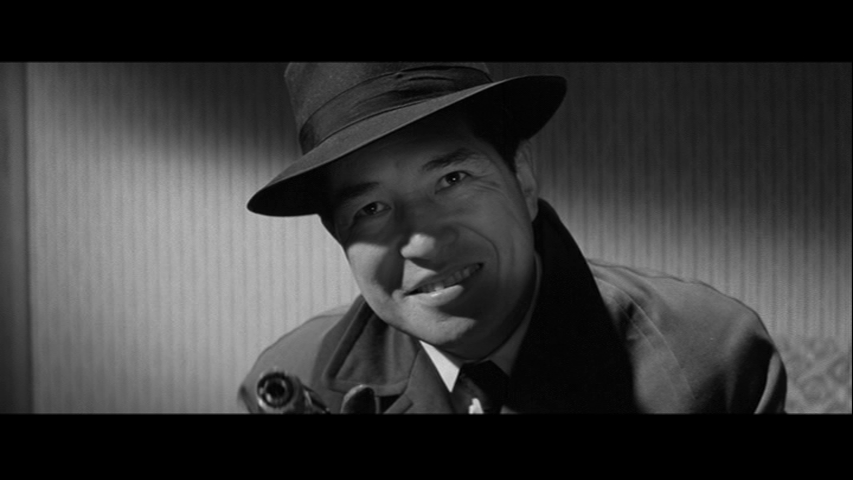
After that brief interlude though, Take Aim At The Police Van boils down its raucous, suspenseful-yet-implausible conclusion, as the tough guys track and stare each other down and the maniacal twists and turns lead to a series of potentially deadly showdowns and hairs-breadth escapes.
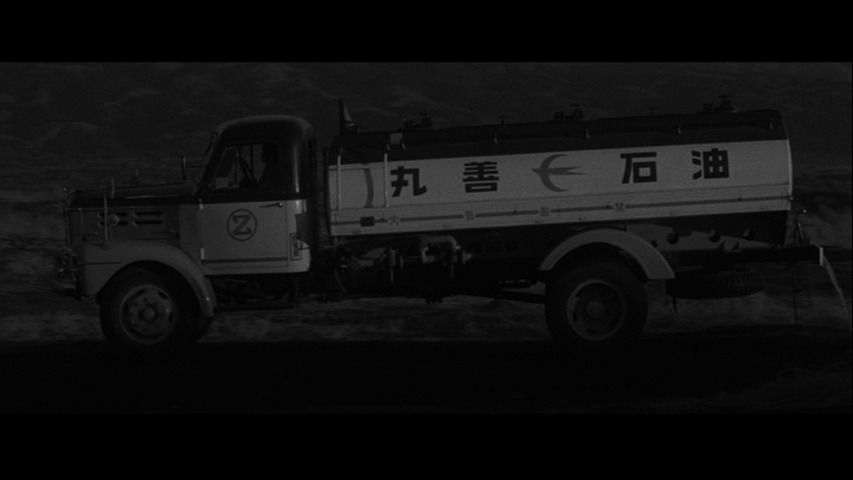
Some of them stretch the suspension of disbelief almost to the snapping point, such as the death-trap stunt that has a gasoline tanker freely rolling down a hill, leaking fuel that’s been set on fire, as Tamon and Yuko, tied up in the cab, have to somehow manage their escape before the flames catch up to the tank and blow the whole thing to smithereens. It’s kind of ridiculous, but goofy fun nonetheless.
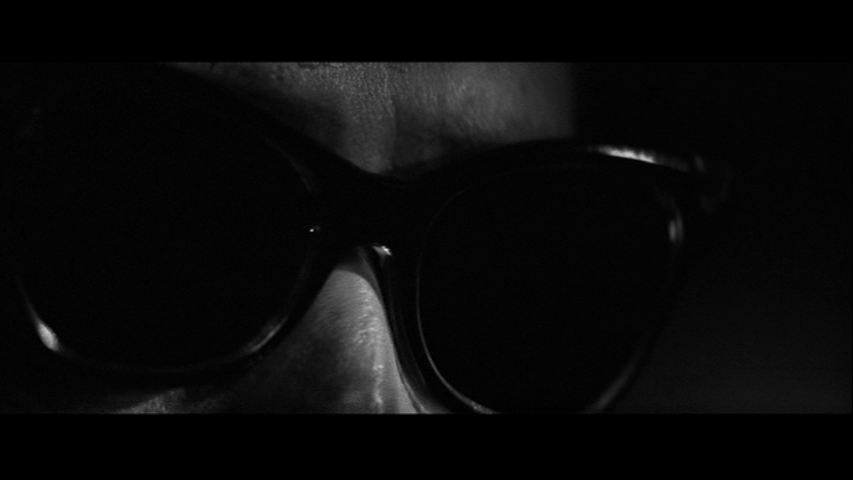
Testing the limits of its times in ways that Hollywood audiences wouldn’t see for several more years, this film is a relic of the pop culture, in both Japan and the West, that was just on the verge of introducing the stylized sex-n-violence of James Bond and his imitators into the cinematic vocabulary of the masses. Suzuki, and the movies in general, went on to ever greater heights of lurid spectacle – you can see a more recent but genetically consistent example of Suzuki’s work, 2001’s Pistol Opera, on Hulu Plus. But even after more than 50 years since it was released, Take Aim At The Police Van still packs more than enough punch to deliver a staggering blow.



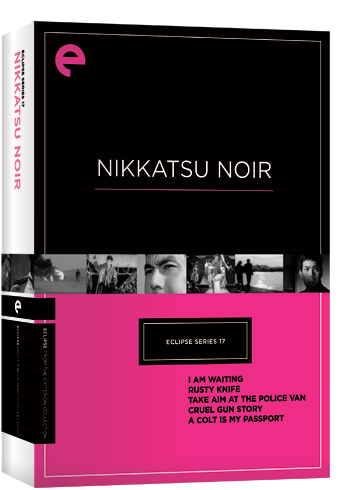
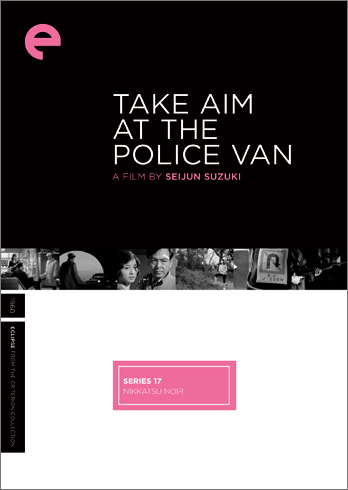

![Bergman Island (The Criterion Collection) [Blu-ray]](https://criterioncast.com/wp-content/uploads/2022/11/bergman-island-the-criterion-collection-blu-ray-400x496.jpg)
![This Is Not a Burial, It’s a Resurrection (The Criterion Collection) [Blu-ray]](https://criterioncast.com/wp-content/uploads/2022/11/this-is-not-a-burial-its-a-resurrection-the-criterion-collection-blu-ray-400x496.jpg)
![Lars von Trier's Europe Trilogy (The Criterion Collection) [The Element of Crime/Epidemic/Europa] [Blu-ray]](https://criterioncast.com/wp-content/uploads/2022/11/lars-von-triers-europe-trilogy-the-criterion-collection-the-element-of-400x496.jpg)
![Imitation of Life (The Criterion Collection) [Blu-ray]](https://criterioncast.com/wp-content/uploads/2022/11/imitation-of-life-the-criterion-collection-blu-ray-400x496.jpg)
![The Adventures of Baron Munchausen (The Criterion Collection) [4K UHD]](https://criterioncast.com/wp-content/uploads/2022/11/the-adventures-of-baron-munchausen-the-criterion-collection-4k-uhd-400x496.jpg)
![Cooley High [Criterion Collection] [Blu-ray] [1975]](https://criterioncast.com/wp-content/uploads/2022/11/cooley-high-criterion-collection-blu-ray-1975-400x496.jpg)
Seijun Suzuki is something else. still need to see this and a couple others of his. Youth of the Beast, Branded to Kill and Gate of Flesh are my favorites right now. Joe Shishido with Suzuki is unstoppable.Â